#this feels like propaganda
Explore tagged Tumblr posts
Text









🇺🇸 🇺🇸 🇺🇸
🇺🇸 🇺🇸 🇺🇸
🇺🇸 🇺🇸 🇺🇸
Homelander Stimboard for anon
#with a halo above his head ; stimboards#stimboard#stimboards#visual stim#stim#visual stims#stims#homelander stimboard#homelander#the boys#idk what this show is about#or anything about this character#america stims#this feels like propaganda#america stim#usa stims#usa stim#stimblr#the boys stimboard#the boys tv
110 notes
·
View notes
Text
The September 5th movie is timed very suspiciously. During the genocide that’s going on right now, really? Why would they think this is appropriate? Regardless of whose side you’re on, why on earth would you release this now?
2 notes
·
View notes
Text
The raven king, chapter ten

"How interesting," they say.
(and they say it a lot)
(i'm not kidding. the entirety of the first two books is just both of them saying how interesting the other is. it's suffocating.)
Another medicated Andrew! And black haired Neil!
The two first books hold such bangers, and clearly not enough people ramble about them. I'm a sucker for the relationship they have afterwards obviously, but even before that they're hilarious. Many underrated scenes that could be worth drawing.
Also I underestimated how Neil dress and presents himself - like: he wears oversized, worn out and faded, preferably light-colored clothes; messy curlyish hair with bangs; sports hoodies; JORTS-
... He's got a banger style actually.
#aftg#all for the game#the raven king#the kings men#neil josten#andrew minyard#andreil#twinyards#brotherly love and internal gay crises#neil keeps his hands in his pockets to feel the phone and keys andrew gave him and thats canon#just a reminder yknow#also did you know neil says the precise sentence 'im fine' exactly nine times in the raven king#like not 'its fine' or whatever just 'im fine'#yes i kept count#MUSE PROPAGANDA (this is an art tag)
5K notes
·
View notes
Text

Trapped in a vicious cycle of pining? Try gay sex! (More things to learn over at Tiger Tiger!)
#tiger tiger#jamis arlesi#remy bonnaire#Arno#through a series of unfortunate events I will be posting this after the update will be out so my timing will be more so:#“Alternate take on how that scene played out” Rather than my funnier “My prediction for how it will go down”#I truly think Remy would rather admit to crimes he didn't commit than confess he has a thing for men.#It would be funny! It would be so funny if this is how Jamis found out. Alas...Not yet...Not yet...#I do love the idea that Jamis completely overlooked the all the elder god horror to get right down to the question of 'HOW DO YOU KNOW HIM'#Remy knows him. Knows him carnally. Wouldn't you like to also know your captain better? In spirit and body and mind?#Jealousy looks good on Jamis. Now he just has to do something about it.#Poor Remy though...He love Jamis so much he'd do anything to prevent losing him.#Which entails never giving Jamis a chance of rejecting or accepting his feelings!#Meanwhile...Jamis is a bisexual disaster man who is at his *limit*.#(For the MDZS fans looking at this Tigers comic who still have no context:#This is like Lan Xichen finding out Jin Guangyao hooked up with Nie Mingjue after LXC spent all that time thinking JGY was straight.#Better yet. This is like WWX just starting to realize his crush on LWJ and then finding out he and JC hooked up in the time skip.#'Nice to know you're into men but why did I have to find out like this' moment.)#((Yes I am trying to bridge the gap between the fandoms I am in. Yes I am still on my propaganda train. Choo Choo!!!))
2K notes
·
View notes
Text

Commission for @livesworthlivingau! I was tasked with drawing a scene of their fic, and I am delighted he let me do Isa having a flustered heart attack :D
#his poor maiden heart#isat#lives worth living au#Disclaimed cause this feels like misleading propaganda LOOP AND SIF ARE THE FOCUS OF THE FIC NOT ISAFRIN#there are very very sweet isafrin scenes but loop fans! this buffet is for you!! Go get your food!#mari draws
1K notes
·
View notes
Text
There's a very, very, important ring the lanterns have to locate and seal. After centuries of absence, they briefly find it's presence somewhere on earth. They're fully expecting the destruction that comes with it (via whoever has it not giving it up)
Danny, who ran away from the GIW, now jaded and left with no sense of hope for humanity, doesn't get why he feels like he's being somewhat spied on.
((He learns to love again and gets adopted in the process))
#Hal and the other lanterns fighting tooth and nail ao Danny doesn't go cocoo: the prompt#I wanted more lanterns x ring of rage works lmao#propaganda at it's finest#Danny doesn't become a lantern btw i feel like he's too tired of that shit#dp x dc#danny phantom#dp x dc crossover#dp x dc prompt#danny fenton#dpxdc#dpxdc prompts#batfam#dc x dp#dc x dp prompt
1K notes
·
View notes
Text
Me in the middle of any conversation I’m having at any given moment

#there are sooooo many good webcomics I’m reading#someday my webcomic propaganda will work on one of my friends I swear#paranatural#pnat#aurora comic#comic aurora#castoff#castoff comic#the glass scientists#tgs#ingress#ingress adventuring company#magical boy#unfamiliar#unfamiliar comic#gloomverse#monsterkind#and I’ve never read it so I feel like a fraud tagging it but#homestuck#tag your webcomic propaganda below#dee speaks
253 notes
·
View notes
Note
zhongli and neuvillette fighting over their reader 🤭🤭
scary dog privilege wherever you go, draconic courting gestures that would scare any regular person, they send each other deadly glares the moment you turn away,
stealing your clothes to just get a whiff of your scent, marking their territory all over your house - making it a battlefield basically, neuvillette (in my hc) is cooler and zhongli is warm so the cuddles are always so comfy ☺️😍,
they give you anything you want - you don't even have to lift a finger, they make you travel between the nations a lot though 😒 sooo clingyyy, extra gentle in their dragon forms as to not squish you, don't even get me started on the size difference 😍😍
just a little thought 🤭☺️
- 🐈⬛
Neuvi being colder is so real and canon. I see him as being colder + a lot more lithe, kinda lanky with smaller but sharper canines versus Zhongli who's warmer and a bit shorter then Neuvi + bulkier with bigger but not as sharp canines.
They've also got very different habits – Zhongli is very prideful not just of himself but his nation. He'll personally give your a tour and purposely drag it out as long as he can. Complimenting Liyue is basically complimenting him, checkmate Neuvi. Especially if he convinces you to try on some local Liyue fashion. Harmless and just a nice gift to anyone else but Neuvi sees it for what it is (since your wearing something from Liyue, technically wearing something of his. He loves his technicalities when it comes to staking a claim over you). Adds salt to the wound by touching you in totally innocent ways like to adjust you towards something he wants to show you or accidently brushing against you when he takes the bags of spoils he's practically drowning you in but really he's just making sure his scent sticks. He's just a sweet, nice gentleman with absolutely no ulterior motives trust.
Neuvillette does love Fontaine, but his habits are more about himself then the nation. He'll take you around if you ask or if the idea strikes him, but you'll probably stay around the making city area or the opera house specifically. He enjoys more personal time with just you and him then anything else. He values the immaterial to the material. Zhongli spoils you with gifts, but Neuvi tries to offer quality time irregardless of physical gifts (though he still gives them just not to the extent of Zhongli). He'll take you to see different operas if that's to your fancy, or leverage a bit of his authority to maybe see a few films since those seem to be hitting off in Fontaine recently. Bet that creaky old archon doesn't have those huh. He feels awkward if you want to watch a trial, but he'll reluctantly agree because. well. it's you. just don't wave or anything he's trying to work and he just Really wants to see you smile at him like that again and it makes him lose his train of thought. gets custom clothes designed by Chiori to replace your clothes from Liyue because they smell of Zhongli and it makes him sulky + he likes to match.
G-d forbid these two are in the same room as you because it's a war of attrition at that point. Constant accidental brush of the hand against your shoulder or elbow but it's just them trying to get rid of the others scent. they are side eyeing each other behind your back while being all smiles whenever your looking. If it's hot and you lean into Neuvi more he's practically GLOWING. not even smug he's just absolutely smitten and happy to be of service. immediately takes off his gloves and presses his hands to your face asking if your okay and if you want to go back with him. if it's cold out and you seek out Zhongli more hes smug as hell beneath the calm veneer. Offers you his coat and stay as physically close to you as he can under the pretense of being worried you'll catch a cold if he doesn't warm you up.
don't even get me started on your house either because you probably have tons of gifts from both of them accumulated everywhere. if Neuvi sees you use a tea set from Zhongli suddenly he had a fantastic gift idea he thought you'd like. he even got some tea included with it so why don't you let him make you some? Zhongli sees you using a goblet Neuvi gave you (totally a coincidence it's similar to his) and suddenly you have 27 square cups in your cabinets that you have no idea where they came from. if the goblet is mysteriously missing oh well. who knows :]
#sagau#genshin sagau#self aware genshin#asks#genshin impact sagau#self aware genshin impact#genshin cult au#genshin impact cult au#is this actually cult au?? csnt tell tagging it anyway#its like 1 am brain not working#🐈⬛ anon#shaking them both like shaker charms#zl feels more possessive too. neuvi is possessive but i dont think snyone could get near zl level of possessiveness#its like having two cats constantly trying to get your attention.#neuvi is more mellow imo so hes not as intense in the rivalry but sometimes he feels PETTY#only if it actually benefits you though because you still come first even if he cant stand zl snd hes not dragging you into it#zl has no issue tossing out gifts neuvi gives you unless your REALLY attached to it but neuvi probably wouldnt yknow..#sometimes neuvi is just clueless he did not gaf abt zl at first he was just smitten with you. he did not want 2 get involved in this rivalry#but hes still a little possessive snd having you come back smelling like zl dressed in clothes from liyue with other gifts from zl..#it rained for like a week straight he was in shambles. acted like a kicked puppy until zl scent was gone 😭#also theres a joke somewhere here abt zl snd his square cups..hm.#just clingy possessive dragons trying to subtly be the only one you pay attention to 🫡#this has been my loser girlfail neuvi propaganda post enjoy
393 notes
·
View notes
Note
Why are Wally and Howdy so cute together??
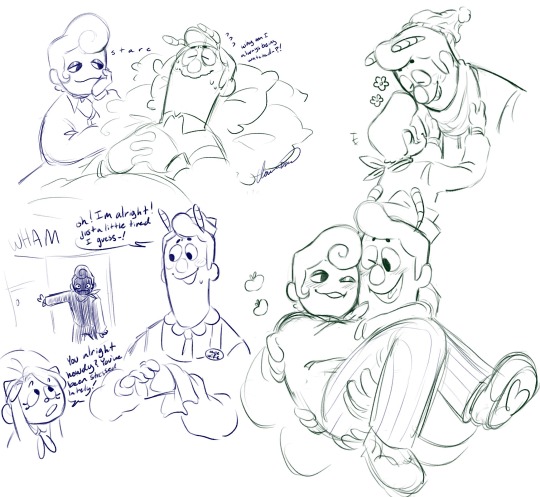
Just something about em that fuels my wee small lil heart smhhh- their dynamic is so wacky yet simple it makes me crave more somehow 😔🥄🥄


Fuckin e e p y
#Ngl this took me some time to doodle dawg my brain is currently running at 2 centimeters an hour#Probably cause I didn’t sleep much smhh#Also side effect from howdy propaganda#Every time I see a sliver of howdy content my body feels like I overdosed in caffeine JSHDHDHDDJ#That is all#welcome home#welcome home wally#wally darling#Welcome home howdy#howdy pillar#welcome home julie#welcome home barnaby#barnaby b beagle#Howdy propaganda#Edit oh god I’m so tired that my dyslexia is gaslight gatekeep girlbossing me JDHDHDH#Wallypillar
4K notes
·
View notes
Text

9/1/24
The past stores our memories, the present carries our actions, but the future...oh, the future could hold anything.
#splatoon#splatoon 3#splatoon fanart#splatfest#grand festival#this is my team future propaganda btw#come join team future!!!#the moral of pretty much all the story modes is to look towards the future so it'd feel right if future won#dailyink#9-24#edit: wow this got a lot of notes thank you all!#thought I'd share a fun fact--the green strands turned out nothing like I was planning lol#at first I wanted to make them thick and bold like pop art#but they ended up thinner than I planned and much more scraggly#so I leaned into that and colored the background blue to evoke kelp imagery!#(also I don't use pressure sensitivity on my drawing pen so I added in all the thickness variation by hand rip)#(surprisingly fun but very time consuming)
274 notes
·
View notes
Text
You know I'll be first to point out if/when Crocodile does a little Luffyism, so let's take a moment to appreciate it when Luffy does a little Crocodile-ism;

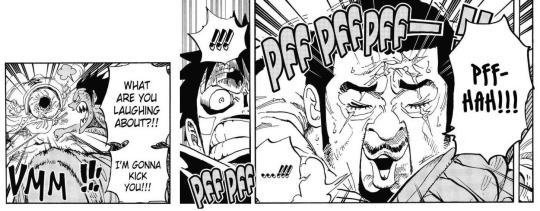
Like Luffy may be a silly lil goofball, but as he's said many times himself, he's always serious (in combat). And so Fujitora laughing at Luffy right in his face, when they're in battle and Luffy is completely dead serious... Yeah, the way he takes it like an insult gives Crocodile

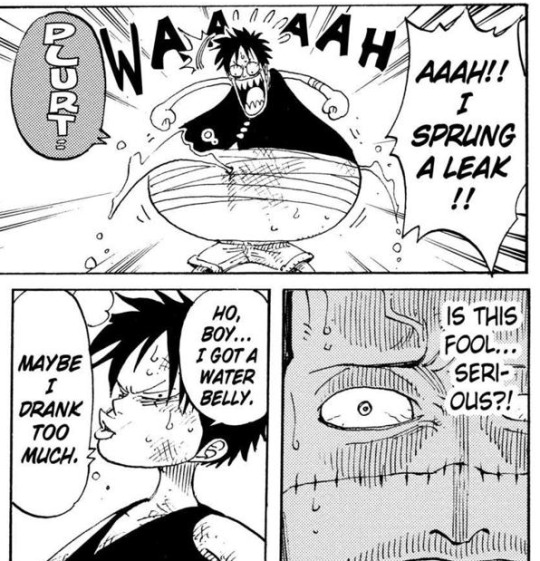

#Moon posting#OP Meta#Crocodad#Same with Luffy getting angry at Kaidou when he got drunk mid-battle#To be fair there's probably more examples of this exact kind of gag#(Kumadori taking A Little Snack in the middle of the Enies Lobby fight. Or Chopper fucking around with Franky's hair.)#(Sanji vs Wanze probably had something like that too that I'm kinda forgetting)#So this isn't like inherently Crocodad Propaganda it's just a type of gag Oda does often#But I'm here to spin it as if it were Crocodad Proof because I have an Evil Agenda to push and propaganda to spread teehee#I did finally finish rereading Dressrosa and I have some Thoughts I'd love to share but. I have work to do so IDK when I'll get around to i#(But it's about Luffy's feelings about Rebecca reuniting with her dad)
171 notes
·
View notes
Text
Millie Warm the Kettle,,,
i thought too hard abt bigb's POV and how in both 3L and DL he's caught between two alliances- one with grian and one with ren
something something damned if he does, damned if he doesn't
#bigbstatz fanart#grian fanart#rendog fanart#martyn and pearl are there too but its not abt them sh#did all this in a day and i feel like its obvious aha#anyways ill never be over blue sword boys ill never be over how he was the last knight of dogwarts#and i will never be over the cheater arc#c!bigb did nothing wrong#thats a solid I Guess on the trafficshipping#and to that one reblogger YES I GAVE INTO THE PANDERING#I AM NOT IMMUNE TO SONG PROPAGANDA#also what’s funny abt this is this is a part of my secret soulmates propaganda campaign#you like toxic yaoi?? well boy howdy do I have a duo for you /j#he sure does like goofy guys with homocidal tendencies huh
1K notes
·
View notes
Text

Sweet dreams, Periwinkle.
#this is so stupid#ARE PEOPLE EVEN GONNA NOTICE??#i feel like I made the joke too subtle and ppl are just gonna glance right over it jfkdjfkld#and yes i gave him the aroace flag who do you take me for. someone who won't shove aroace peri propaganda everywhere? perish the thought#periganda if you will. peri-sh the thought if you will. cackles maniacally#fop#fairly oddparents#fopanw#fop a new wish#the fairly oddparents#fop peri#peri fop#periwinkle#peri fairywinkle cosma#peri fairly oddparents#periwinkle fairywinkle-cosma#I JUST NOTICED A BIG MISTAKE thank god i chose to stare at this in fear of what i had created for 5 minutes it's fixed now. phew
284 notes
·
View notes
Text
The Real Cost of the Fashion Industry
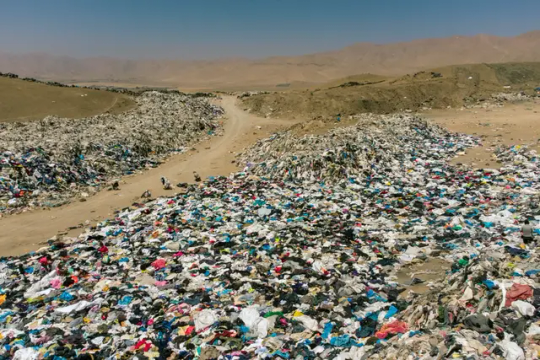
Atacama Desert, in Alto Hospicio, Iquique, Chile. (source)
The textile industry is destroying the world. The industry is wasting massive amounts of energy and materials, and polluting the air, the ground and the water supplies. It overwhelmingly exploits it's labour and extracts wealth from colonized countries, especially in Asia. I assume we all broadly understand this, but I think it's useful to have it all laid out in front of you to see the big picture, the core issues causing this destruction and find ways how to effectively move forward.
The concerning trend behind this ever-increasing devastation are shortening of trend cycles, lowering clothing prices and massive amount of wasted products. Still in year 2000 it was common for fashion brands to have two collections per year, while now e.g. Zara produces 24 collections and H&M produces 12-16 collections per year. Clothing prices have fallen (at leas in EU) 30% from 1996 to 2018 when adjusted to inflation, which has contributed to the 40% increase in clothing consumption per person between 1996 and 2012 (in EU). (source) As the revenue made by the clothing industry keep rising - from 2017 to 2021 they doubled (source) - falling prices can only be achieved with increasing worker exploitation and decreasing quality. I think the 36% degrees times clothing are used in average during the last 15 years (source) is a clear indication on the continuing drop in quality of clothing. Clothing production doubled between 2000 and 2015, while 30% of the clothes produced per year are never sold and are often burned instead (source), presumably to prevent the returns from falling due to oversupply.
These all factors are driving people to overconsume. While people in EU keep buying more clothes, they haven't used up to 50% of the clothes in their wardrobe for over a year (source). This overconsumption is only made much worse by the new type of hyper fast fashion companies like SHEIN and Temu, which are using addictive psychological tactics developed by social media companies (source 1, source 2). They are cranking up all those concerning trends I mentioned above.
Under the cut I will go through the statistics of the most significant effects of the industry on environment and people. I will warn you it will be bleak. This is not just a fast fashion problem, basically the whole industry is engaging in destructive practices leading to this damage. Clothing is one of those things that would be actually relatively easy to make without massive environmental and human cost, so while that makes the current state of the industry even more heinous, it also means there's hope and it's possible to fix things. In the end, I will be giving some suggestions for actions we could be doing right now to unfuck this mess.
Carbon emissions
The textile industry is responsible for roughly 10% of the global CO2 emissions, more than aviation and shipping industry combined. This is due to the massive supply chains and energy intensive production methods of fabrics. Most of it can be contributed to the fashion sector since around 60% of all the textile production is clothing. Polyester, a synthetic fiber made from oil which accounts for more than half of the fibers used in the textile industry, produces double the amount of carbon emissions than cotton, accounting for very large proportions of all the emissions by the industry. (source 1, source 2)
Worker exploitation
Majority of the textiles are produced in Asia. Some of the worst working conditions are in Bangladesh, one of the most important garment producers, and Pakistan. Here's an excerpt from EU Parliament's briefing document from 2014 after the catastrophic Rana Plaza disaster:
The customers of garment producers are most often global brands looking for low prices and tight production timeframes. They also make changes to product design, product volume, and production timeframes, and place last-minute orders without accepting increased costs or adjustments to delivery dates. The stresses of such policies usually fall on factory workers.
The wage exploitation is bleak. According to the 2015 documentary The True Cost less than 2% of all garment factory workers earned a living wage (source). Hourly wages are so low and the daily quotas so high, garment workers are often forced through conditions or threats and demand to work extra hours, which regularly leads to 10-12 hour work days (source) and at worst 16 hour workdays (source), often without days off. Sometimes factories won't compensate for extra hours, breaching regulations (source).
Long working hours, repetitive work, lack of breaks and high pressure leads to increased risks of injuries and accidents. Small and even major injuries are extremely common in the industry. A study in three factories in India found that 70% of the workers suffered from musculosceletal symptoms (source). Another qualitative study of female garment workers and factory doctors in Dhaka found that long hours led to eye strain, headaches, fatigue and weight loss in addition to muscular and back pains. According to the doctors interviewed, weight loss was common because the workers work such long hours without breaks, they didn't have enough time to eat properly. (source) Another study in 8 factories in India found that minor injuries were extremely common and caused by unergonomic work stations, poor organization in the work place and lack of safety gear, guidelines and training (source). Safety precautions too are often overlooked to cut corners, which periodically leads to factory accidents, like in 2023 lack of fire exists and fire extinguishers, and goods stacked beyond capacity led to a factory fire in Pakistan which injured dozens of workers (source) or like in 2022 dangerous factory site led to one dead worker and 9 injured workers (source).
Rana Plaza collapse in 2013 is the worst industrial accident in recent history. The factory building did not have proper permits and the factory owner blatantly ignored signs of danger (other businesses abandoned the building a day before the collapse), which led to deaths of 1 134 workers and injuries to 2 500 workers. The factory had or were at the time working for orders of at least Prada, Versace, Primark, Walmart, Zara, H&M, C&A, Mango, Benetton, the Children's Place, El Corte Inglés, Joe Fresh, Carrefour, Auchan, KiK, Loblaw, Bonmarche and Matalan. None of the brands were held legally accountable for the unsafe working conditions which they profited off of. Only 9 of the brands attended a meeting to agree on compensation for the victim's families. Walmart, Carrefour, Auchan, Mango and KiK refused to sight the agreement, it was only signed by Primark, Loblaw, Bonmarche and El Corte Ingles. The compension these companies provided was laughable though. Primemark demanded DNA evidence that they are relatives of one of the victims from these struggling families who had lost their often sole breadwinner for a meager sum of 200 USD (which doesn't even count for two months of living wage in Bangladesh (source)). This obviously proved to be extremely difficult for most families even though US government agreed to donate DNA kits. This is often said to be a turning point in working conditions in the industry, at least in Bangladesh, but while there's more oversight now, as we have seen, there's clearly still massive issues. (source 1, source 2)
One last major concern of working conditions in the industry I will mention is the Xinjiang raw cotton production, which is likely produced mainly with forced labour from Uighur concentration camps, aka slave labour of a suspected genocide. 90% of China's raw cotton production comes from Xinjiang (source). China is the second largest cotton producer in the world, after India, accounting 20% of the yearly global cotton production (source).
Pollution
Synthetic dyes, which synthetic fibers require, are the main cause of water pollution caused by the textile industry, which is estimated to account for 20% of global clean water pollution (source). This water pollution by the textile industry is suspected of causing a lot of health issues like digestive issues in the short term, and allergies, dermatitis, skin inflammation, tumors and human mutations in the long term. Toxins also effect fish and aquatic bacteria. Azo dyes, one of the major pollutants, can cause detrimental effects to aquatic ecosystems by decreasing photosynthetic activity of algae. Synthetic dyes and heavy metals also cause large amounts of soil pollution. Large amounts of heavy metals in soil, which occurs around factories that don't take proper environmental procautions, can cause anaemia, kidney failure, and cortical edoem in humans. That also causes changes in soil texture, decrease in soil microbial diversity and plant health, and changes in genetic structure of organisms growing in the soil. Textile factory waste water has been used for irrigation in Turkey, where other sources of water have been lacking, causing significant damage to the soil. (source)
Rayon produced through viscose process causes significant carbon disulphide and hydrogen sulphide pollution to the environment. CS2 causes cardiovascular, psychiatric, neuropsychological, endocrinal and reproductive disorders. Abortion rates among workers and their partners exposed to CS2 are reported to be significantly higher than in control groups. Many times higher amounts of sick days are reported for workers in spinning rooms of viscose fiber factories. China and India are largest producers of CS2 pollution, accounting respectively 65.74% and 11,11% of the global pollution, since they are also the major viscose producers. Emission of CS2 has increased significantly in India from 26.8 Gg in 2001 to 78.32 Gg in 2020. (source)
Waste
The textile industry is estimated to produce around 92 million tons of textile waste per year. As said before around 30% of the production is never sold and with shortening lifespans used the amount of used clothing that goes to waster is only increasing. This waste is large burned or thrown into landfills in poor countries. (source) H&M was accused in 2017 by investigative journalists of burning up to 12 tonnes of clothes per year themselves, including usable clothing, which they denied claiming they donated clothing they couldn't sell to charity instead (source). Most of the clothing donated to charity though is burned or dumbed to landfills (source).
Most of the waste clothing from rich countries like European countries, US, Australia and Canada are shipped to Chile (source) or African countries, mostly Ghana, but also Burkina Faso and Côte d'Ivoire (source). There's major second-hand fashion industries in these places, but most of the charity clothing is dumbed to landfills, because they are in such bad condition or the quality is too poor. Burning and filling landfills with synthetic fabrics with synthetic dyes causes major air, water and soil pollution. The second-hand clothing industry also suppresses any local clothing production as donated clothing is inherently more competitive than anything else, making these places economically reliant on dumbed clothing, which is destroying their environment and health, and prevents them from creating a more sustainable economy that would befit them more locally. This is not an accident, but required part of the clothing industry. Overproduction let's these companies tap on every new trend quickly, while not letting clothing the prices in rich countries drop so low it would hurt their profits. Production is cheaper than missing a trend.
Micro- and nanoplastics
There is massive amounts of micro- and nanoplastics in all of our environment. It's in our food, drinking water, even sea salt (source). Washing synthetic textiles accounts for roughly 35% of all microplastics released to the environment. It's estimated that it has caused 14 million tonnes of microplastics to accumulate into the bottom of the ocean. (source)
Microplastics build up into the intestines of animals (including humans), and have shown to probably cause cause DNA damage and altered organism behavior in aquatic fauna. Microplastics also contain a lot of the usual pollutants from textile industry like synthetic dyes and heavy metals, which absorb in higher quantities to tissues of animals through microplastics in the intestines. Studies have shown that the adverse effect are higher the longer the microplastics stay in the organism. The effects cause major risks to aquatic biodiversity. (source) The health effects of microplastics to humans are not well known, but studies have shown that they could have adverse effects on digestive, respiratory, endocrine, reproductive and immune systems. (source)
Microplastics degrade in the environment even further to nanoplastics. Nanoplastic being even smaller are found to enter blood circulation, get inside cells and cross the blood-brain barrier. In fishes they have been found to cause neurological damage. Nanoplastics are also in the air, and humans frequently breath them in. Study in office buildings found higher concentration of nanoplastics in indoor air than outdoor air. Inside the nanoplastics are likely caused mostly by synthetic household textiles, and outdoors mostly by car tires. (source) An association between nanoplastics and mitochondrial damage in human respiratory cells was found in a recent study. (source)
Micro and nano plastics are also extremely hard to remove from the environment, making it even more important that we reduce the amount of microplastics we produce as fast as possible.
What can we do?
This is a question that deserves it's own essays and articles written about it, but I will leave you with some action points. Reading about these very bleak realities can easily lead to overwhelming apathy, but we need to channel these horrors into actions. Whatever you do, do not fall into apathy. We don't have the luxury for that, we need to act. These are industry wide problems, that simply cannot be fixed by consumerism. Do not trust any clothing companies, even those who market themselves as ethical and responsible, always assume they are lying. Most of them are, even the so called "good ones". We need legislation. We cannot allow the industry to regulate itself, they will always take the easy way out and lie to their graves. I will for sure write more in dept about what we can do, but for now here's some actions to take, both political and individual ones.
Political actions
Let's start with political actions, since they will be the much more important ones. While we are trying to dismantle capitalism and neocolonialism (the roots of these issues), here's some things that we could do right now. These will be policies that we should be doing everywhere in the world, but especially rich countries, where most of the clothing consumption is taking place. Vote, speak to others, write to your representative, write opinion pieces to your local papers, engage with democracy.
Higher requirements of transparency. Right now product transparency in clothing is laughably low. In EU only the material make up and the origin country of the final product are required to be disclosed. Everything else is up to the company. Mandatory transparency is the only way we can force any positive changes in the production. The minimum of transparency should be: origin countries of the fibers and textiles in the product itself; mandatory reports of the lifecycle emissions; mandatory reports of whole chain of production. Right now the clothing companies make their chain of production intentionally complex, so they have plausible deniability when inevitably they are caught violating environmental or worker protection laws (source). They intentionally don't want to be able to track down their production chain. Forcing them to do so anyway would make it very expensive for them to keep up this unnecessarily complex production chain. These laws are most effective when put in place in large economies like EU or US.
Restrictions on the use of synthetic fibers. Honestly I think they should be banned entirely, since the amount of microplastics in our environment is already extremely distressing and the other environmental effects of synthetic fibers are also massive, but I know there are functions for which they are not easily replaced (though I think they can be replaces in those too, but that's a subject of another post), so we should start with restrictions. I'm not sure how they should be specifically made, I'm not a law expert, but they shouldn't be used in everyday textiles, where there are very easy and obvious other options.
Banning viscose. There are much better options for viscose method that don't cause massive health issues and environmental destruction where ever it's made, like Lyocell. There is absolutely no reason why viscose should be allowed to be sold anywhere.
Governmental support for local production by local businesses. Most of the issues could be much more easily solved and monitored if most clothing were not produced by massive global conglomerations, but rather by local businesses that produce locally. All clothing are made by hand, so centralizing production doesn't even give it advantage in effectiveness (only more profits for the few). Producing locally would make it much more easier to enforce regulations and it would reduce production chains, making production more effective, leaving more profits into the hands of the workers and reducing emissions from transportation. When the production is done by local businesses, the profits would stay in the producing country and they could be taxed and utilized to help the local communities. This would be helpful to do in both exploited and exploiter countries. When done in rich countries who exploit poorer ones, it would reduce the demand for exploitation. In poor countries this is not as easily done, since poor means they don't have money to give around, but maybe this could be a good cause to put some reparations from colonizers and global corporations, which they should pay.
Preventing strategic accounting between subsidiaries and parent companies. Corporate law is obviously not my area of expertise, but I know that allowing corporations to move around the accounting of profits and losses between subsidiaries and parent companies in roughly 1980s, was a major factor in creating this modern global capitalist system, where corporations can very easily manipulate their accounting to utilize tax heavens and avoid taxes where they actually operate, which is how they are upholding this terrible system and extracting the profits from the production countries. How specifically this would be done I can't tell because again I know shit about corporate law, so experts of that field should plan the specifics. Overall this would help deal with a lot of other problems than just the fashion industry. Again for it to be effective a large economic area like EU or US should do this.
Holding companies accountable for their whole chain of production. These companies should be dragged to court and made to answer for the crimes they are profiting of off. We should put fear back into them. This is possible. Victims of child slavery are already doing this for chocolate companies. If it's already not how law works everywhere, the laws should be changed so that the companies are responsible even if they didn't know, because it's their responsibility to find out and make sure they know. They should have been held accountable for the Rana Plaza disaster. Maybe they still could be. Sue the mother fuckers. They should be afraid of us.
Individual actions
I will stress that the previous section is much more important and that there's no need to feel guilty for individual actions. This is not the fault of the average consumer. Still we do need to change our relationship to fashion and consumption. While it's not our fault, one of the ways this system is perpetuated, is by the consumerist propaganda by fashion industry. And it is easier to change our own habits than to change the industry, even if our own habits have little impact. So these are quite easy things we all could do as we are trying to do bigger change to gain some sense of control and keep us from falling to apathy.
Consume less. Better consumption will not save us, since consumption itself is the problem. We consume too much clothing. Don't make impulse purchases. Consider carefully weather you actually need something or if you really really want it. Even only buying second-hand still fuels the industry, so while it's better than buying new, it's still better to not buy.
Take proper care of your clothing. Learn how to properly wash your clothing. There's a lot of internet resources for that. Never wash your wool textiles in washing machine, even if the textile's official instructions allow it. Instead air them regularly, rinse them in cool water if they still smell after airing and wash stains with water or small amount of (wool) detergent. Never use fabric softener! It damages the fabrics, prevents them from properly getting clean and is environmentally damaging. Instead use laundry vinegar for making textiles softer or removing bad smells. (You can easily make laundry vinegar yourself too from white vinegar and water (and essential oils, if you want to add a scent to it) which is much cheaper.) Learn how to take care of your leather products. Most leather can be kept in very good condition for a very long time by occasional waxing with beeswax.
Use the services of dressmakers and shoemakers. Take your broken clothing or clothing which doesn't fit anymore to your local dressmaker and ask them if they can do something about it. Take your broken and worn leather products to your local shoemaker too. Usually it doesn't cost much to get something fixed or refitted and these expert usually have ways to fix things you couldn't even think of. So even if the situation with your clothing or accessory seems desperate, still show it to the dressmaker or shoemaker.
If it's extremely cheap, don't buy it. Remember that every clothing is handmade. Only a small fraction of the cost of the clothing will be paying the wages of the person who made it with their hands. If a shirt costs 5 euros (c. 5,39 USD), it's sewer was only payed mere cents for sewing it. I'm not a quick sewer and it takes me roughly 1-2 hours to cut, prepare and sew a simple shirt, so I'm guessing it would take around half an hour to do all that for a factory worker on a crunch, at the very least 15 minutes. So the hourly pay would still be ridiculously low. However, as I said before, the fact that the workers in clothing factories get criminally low pay is not the fault of the consumer, so if you need a clothing item, and you don't have money to buy anything else than something very cheep, don't feel guilty. And anyway expensive clothing in no way necessarily means reasonable pay or ethical working conditions, cheep clothing just guarantee them.
Learn to recognize higher quality. In addition to exploitation, low price also means low quality, but again high price doesn't guarantee high quality. High quality allows you to buy less, so even if it's not as cheep as low quality, if you can afford it, when you need it, it will be cheaper in long run, and allows you to consume less. Check the materials. Natural fibers are your friends. Do not buy plastic, if it's possible to avoid. Avoid household textiles from synthetic fibers. Avoid textiles with small amounts of spandex to give it stretch, it will shorten the lifespan of the clothing significantly as the spandex quickly wears down and the clothing looses it's shape. Also avoid clothing with rubber bands. They also loose their elasticity very quickly. In some types of clothing (sport wear, underwear) these are basically impossible to avoid, but in many other cases it's entirely possible.
Buy from artisans and local producers, if you can. As said better consumption won't fix this, but supporting artisans and your local producers could help keep them afloat, which in small ways helps create an alternative to the exploitative global corporations. With artisans especially you know the money goes to the one who did the labour and buying locally means less middlemen to take their cut. More generally buy rather from businesses that are located to the same country where the production is, even if it's not local to you. A local business doesn't necessarily produce locally.
Develop your own taste. If you care about fashion and style, it's easy to fall victim to the fashion industry's marketing and trend cycles. That's why I think it's important to develop your personal sense of style and preferences. Pay attention at what type of clothes are comfortable to you. Go through your wardrobe and track for a while which clothing you use most and which least. Understanding your own preferences helps you avoid impulse buying.
Consider learning basics of sewing. Not everyone has the time or interest for this, but if you in anyway might have a bit of both, I suggest learning some very simple and basic mending and reattaching a button.
Further reading on this blog: How to see through the greenwashing propaganda of the fashion industry - Case study 1: Shein
Bibliography
Academic sources
An overview of the contribution of the textiles sector to climate change, 2022, L. F. Walter et al., Frontiers in Environmental Science
How common are aches and pains among garment factory workers? A work-related musculoskeletal disorder assessment study in three factories of south 24 Parganas district, West Bengal, 2021, Arkaprovo Pal et al., J Family Med Prim Care
Sewing shirts with injured fingers and tears: exploring the experience of female garment workers health problems in Bangladesh, 2019, Akhter, S., Rutherford, S. & Chu, C., BMC Int Health Hum Rights
Occupation Related Accidents in Selected Garment Industries in Bangalore City, 2006, Calvin, Sam & Joseph, Bobby, Indian Journal of Community Medicine
A Review on Textile and Clothing Industry Impacts on The Environment, 2022, Nur Farzanah Binti Norarmi et al., International Journal of Academic Research in Business and Social Sciences
Carbon disulphide and hydrogen sulphide emissions from viscose fibre manufacturing industry: A case study in India, 2022, Deepanjan Majumdar et al., Atmospheric Environment: X
Microplastics Pollution: A Brief Review of Its Source and Abundance in Different Aquatic Ecosystems, 2023, Asifa Ashrafy et al., Journal of Hazardous Materials Advances
Health Effects of Microplastic Exposures: Current Issues and Perspectives in South Korea, 2023, Yongjin Lee et al., Yonsei Medical Journal
Nanoplastics and Human Health: Hazard Identification and Biointerface, 2022, Hanpeng Lai, Xing Liu, and Man Qu, Nanomaterials
Other sources
The impact of textile production and waste on the environment (infographics), 2020, EU
Chile’s desert dumping ground for fast fashion leftovers, 2021, AlJazeera
Fashion - Worldwide, 2022 (updated 2024), Statista
Fashion Industry Waste Statistics & Facts 2023, James Evans, Sustainable Ninja (magazine)
Everything You Need to Know About Waste in the Fashion Industry, 2024, Solene Rauturier, Good on You (magazine)
Textiles and the environment, 2022, Nikolina Šajn, European Parliamentary Research Service
Help! I'm addicted to secondhand shopping apps, 2023, Alice Crossley, Cosmopolitan
Addictive, absurdly cheap and controversial: the rise of China’s Temu app, 2023, Helen Davidson, Guardian
Workers' conditions in the textile and clothing sector: just an Asian affair? - Issues at stake after the Rana Plaza tragedy, 2014, Enrico D'Ambrogio, European Parliamentary Research Service
State of The Industry: Lowest Wages to Living Wages, The Lowest Wage Challenge (Industry affiliated campaign)
Fast Fashion Getting Faster: A Look at the Unethical Labor Practices Sustaining a Growing Industry, 2021, Emma Ross, International Law and Policy Brief (George Washington University Law School)
Dozens injured in Pakistan garment factory collapse and fire, 2023, Hannah Abdulla, Just Style (news media)
India: Multiple factory accidents raise concerns over health & safety in the garment industry, campaigners call for freedom of association in factories to ‘stave off’ accidents, 2022, Jasmin Malik Chua, Business & Human Rights Resource Center
Minimum Wage Level for Garment Workers in the World, 2020, Sheng Lu, FASH455 Global Apparel & Textile Trade and Sourcing (University of Delaware)
Rana Plaza collapse, Wikipedia
Buyers’ compensation for Rana Plaza victims far from reality, 2013, Ibrahim Hossain Ovi, Dhaka Tribune (news media)
World cotton production statistics, updated 2024, The World Counts
Dead white man’s clothes, 2021, Linton Besser, ABC News
#fashion#fashion industry#sustainability#sustainable fashion#sustainable clothing#environment#climate change#i will be continuing the series of how to see through fashion industry propaganda at some point#i just felt compelled to write this because i feel like people so often miss the forest for the trees in this conversation
493 notes
·
View notes
Text





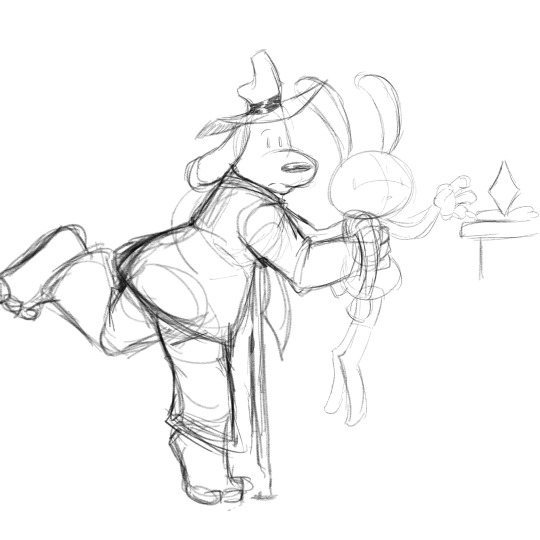



Doodle Dump :D !!!!!!! Enjoy my amalgamations <3
#sam and max#sam and max freelance police#freelance husbands#splatoon#splatoon 3#deepcut splatoon#gravity falls#bill cipher#billford#my art#Been busy :p#When i saw the splatoon concept art again for the original characters for splatoon I just HAD to draw deepcut as mammals#i feel like they would have Hares instead of Octolings if they went through with it#shiver is a hare :3#BM is a bear#and Frye is a bunny#also i was taken by the gravity falls propaganda 😔
155 notes
·
View notes
Text
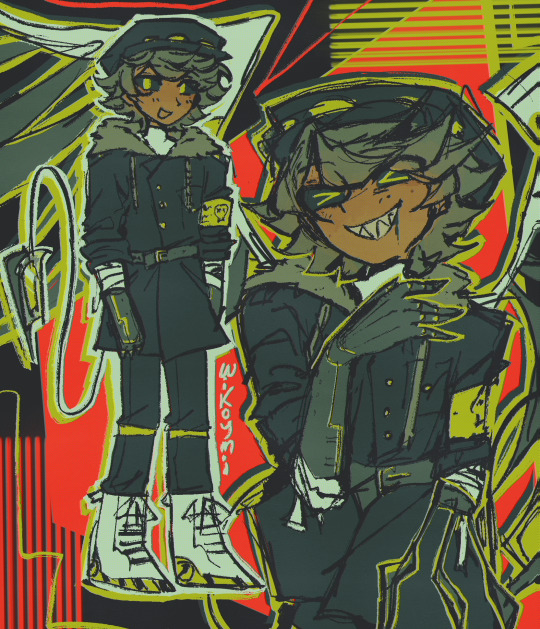
guy who is only a bit robovorus
#n murder drones#serial designation n#murder drones#murder drones fanart#wikoart#finished#PLEASE watch this show in the latam spanish dub. ITS SO GOOD#i need to spread my propaganda#(uzi says Fuck yourself instead of bite me)#this human design is kind of strange but im tired its ok#i love N sosososooso much also episode 7 killed me and my entire family#i feel like i shouldve given him white hair tbh. but we ball
364 notes
·
View notes